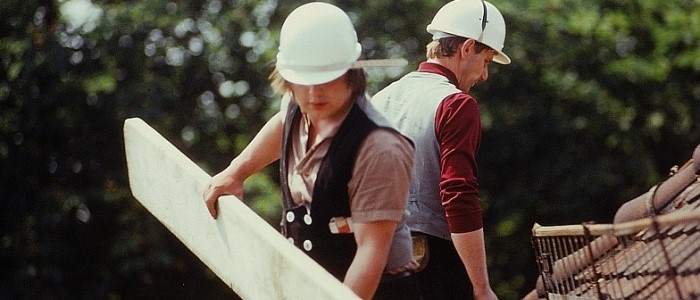Have you ever wondered what the difference is between carpentry and joinery?
In this guide, we look into the particulars of these two subtly different trades and explore what exactly is involved in a career as a carpenter or joiner.
Carpentry and joinery are both construction trades. In its most simplest and traditional sense, joiners ‘join’ wood in a workshop, whereas carpenters construct the building elements on-site.
When considering who would be best to help with a project, it’s worth noting that the skill in making construction components (such as windows, doors, trusses, stairs, etcetera) is in the joints – this is where a joiner is specialised. But, carpenters normally work on site, so their specialised skill is in dealing wood fixtures in the context of an ongoing job.
Common jobs for joiners include:
- Making doors/ window frames
- Creating fitted furniture
- Building stairs
Common jobs for carpenters include:
- Fitting floors
- Fitting staircases
- Fixing window frames
- Installing cupboards and shelving
How to become a Joiner/Carpenter:
If you want to work in the construction industry and specialise in dealing with wood, firstly, you’ll need an eye for detail, good maths skills (for working out measurements) and the ability to follow complex Technical plans.
To get your foot in the door, you need on-site experience. If you’ve not worked in construction before, you may be able to start as a joiner’s mate or labourer to get the necessary site experience. Once you’ve proven yourself, it’s common for employers to train up their existing employees, rather than hire-in specialists, so they may offer you training in carpentry and joinery.
Another route is to take a full-time or part-time college course or apprenticeship in carpentry or joinery. This would give you some of the knowledge and practical skills needed for the job and may improve your chances of finding work in the industry.
The qualifications you can receive in an apprenticeship cover a broad range of skills, including:
- Bench work – such as marking, setting out and producing joinery products
- Site work – installing first/second fixings and structural components
- Shoplitting – manufacturing and installing internal and external frames, shop fronts, fixtures and finishings
- Timber frame erection – putting up timber frame walls, laying floors and fixing roof structures
- Wheelwrighting – marking out, making and assembling joinery items for carriages
- Computer-Aided Design (CAD)
In a nutshell

There are of course some overlaps as most carpenters and joiners will have learnt the basics of both trades, like shown above, before specialising. However, while a joiner may make you a stunning bespoke staircase, for example, a carpenter may do a better job in fitting it in your house.
A joiner is essentially someone who makes the product that a carpenter installs or repairs. Traditionally, joiners work in workshops, producing the components for carpenters to fix.
And You?
Do you think we’ve missed any comparisons, or have your own experiences in carpentry or joinery that you’d like to share? If so, be sure to fire us a tweet – we’d love to hear from you.
Likewise, if you have any questions or need advice on sourcing quality timber for next project, don’t hesitate to get in touch with International Timber today.
Images used courtesy of Wikimedia Commons.
